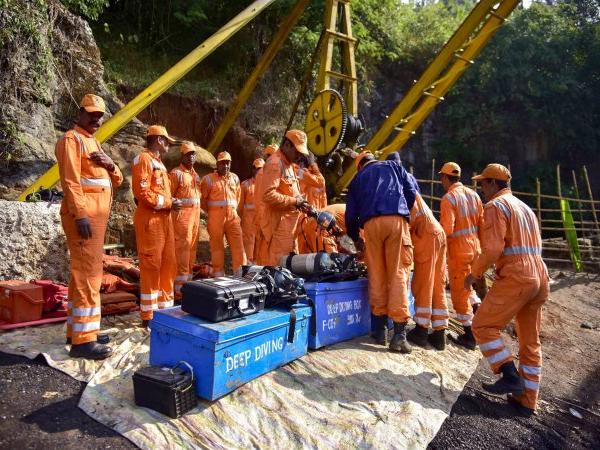In 2010, when 33 men got trapped in a copper-gold mine in the Atacama desert in Chile, an operation with the support of global experts in rescue was initiated, and innovative technologies were deployed to ensure that the men could be extracted from the hole about 700 metres underground. It was a tedious, costly and long-drawn affair but the efforts were fruitful and the miners lucky to walk away alive. The government and the mining company poured in maximum resources to rescue the trapped workers. They worked to a game plan day and night and ensured that things went well despite overwhelming odds. The miners of Chile were equipped to the extent that they had minimal safety gear and rations that could sustain them for at least a few days. More recently, when a team of young footballers named wild boars got trapped in a cave in northern Thailand, another such global effort was initiated and the whole team was rescued.
A group of 15 men are feared trapped inside an illegal coal mine in Meghalaya, India. The miners got trapped in the Ksan coal mines in East Jaintia Hills December 13, after river water found its way into the mine and flooded it. The said mine is a small-scale one, of the kind that are collectively called ‘rat-hole mines’, for the crude, unscientific way in which they are operated. They lack proper security measures for miners and are prone to accidents. The state had banned such mining in 2014. The efforts to rescue these miners began in sweet time and reports suggest that the possibility of finding the men alive is limited. There were reports that the rescue operations were affected further as the crane operator, who was pivotal to the operations, did not turn up as it was Christmas. No matter the occasion or celebration, Holidays being the reason for things coming to a standstill in India are sadly commonplace.
The situation for the 15 men is becoming bleaker by the moment. As the district authorities do not even have the layout of the mine in hand, it has given the rescuers no way to find out where the miners could be located and whether there is any possibility at all of them getting to a pocket of safety. Another handicap is that the rescuers do not have the necessary equipment to remove water from the mine to enable divers to take a look. When such is the response and preparedness, the miners have little hope left.
In the past, when the military was involved in the rescue of soldiers trapped in the Siachen glacier, Lance Naik Hanumanthappa was eventually rescued alive from the snow but succumbed later at the hospital. In cases of search and rescue and other emergencies, operations need to take place at high speed, as time becomes the deciding factor between life and death.
In the present case, the lives of the miners are hanging in balance and tipping towards grave danger with each passing moment. The country needs an effective mechanism to deal with accidents such as these. Although the National Disaster Response Force and other such teams have been brought in, they are suffering from a paucity of necessary training, expert personnel, equipment and resources to deal with the situation.
Emergency services should be able to swing into action, independent of other divisions of the government. India has always stumbled in such instances, be it rescue or combat related. While millions are being spent on the military every year (where that money goes is a whole different subject altogether), there seems to be no specific strategy for an emergency division, which could prove to be the lifeline of citizens; whether the crisis be natural or man-made, or created due to internal or external threat. In the present case, one can only pray for divine intervention for the miners.
